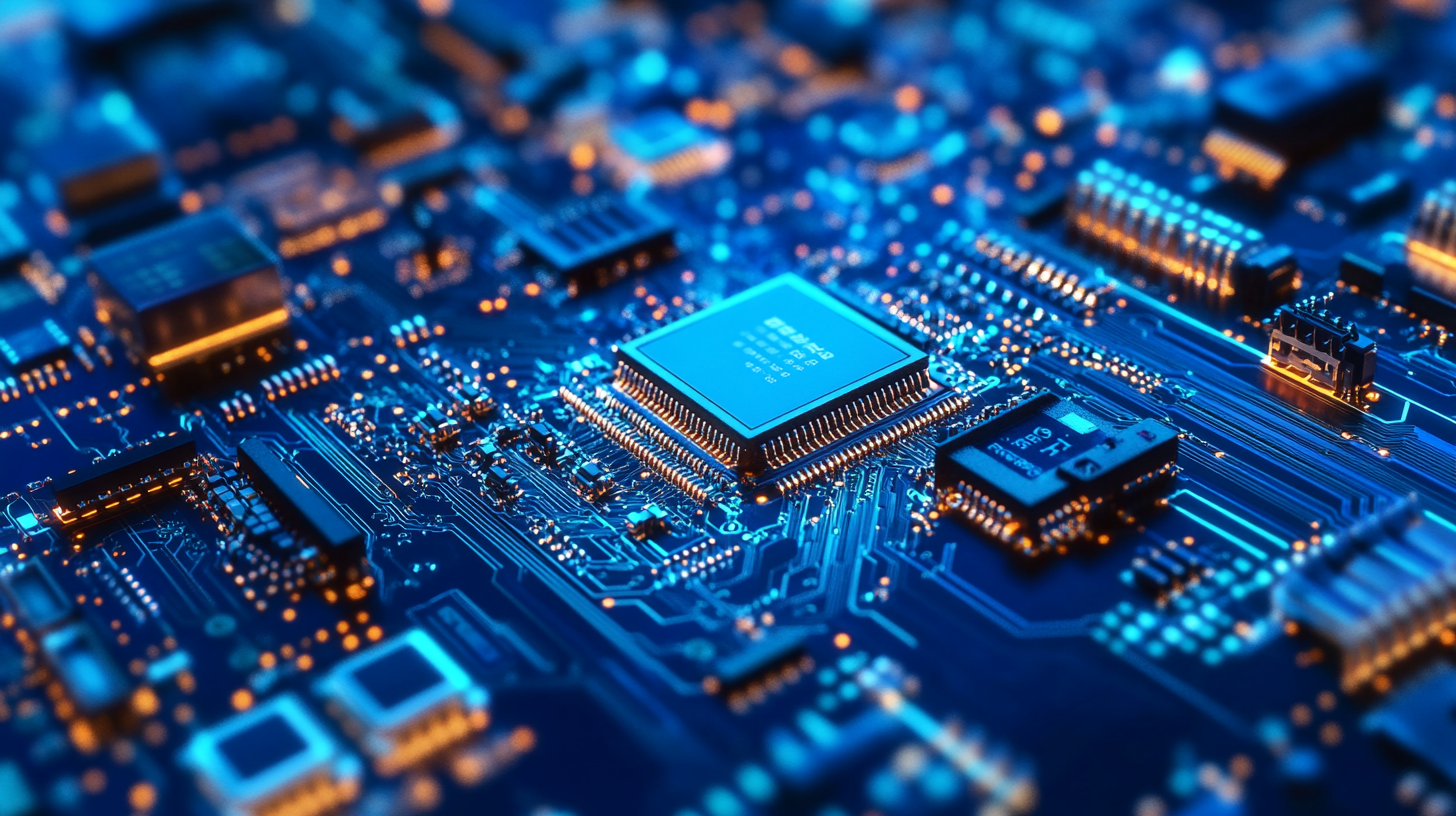Leave Your Message
As the transition towards renewable energy sources gains momentum, hybrid inverters play a crucial role in enabling the efficient management of solar power systems. At the heart of this technology is the Hybrid Inverter LCD Display, which provides users with vital information regarding energy production, consumption, and system performance. However, despite its many advantages, the Hybrid Inverter LCD Display is not without challenges. Understanding these challenges is essential for users and homeowners seeking to optimize their solar energy setups and ensure long-term reliability.
In this blog, we will explore the common issues associated with the Hybrid Inverter LCD Display, including visibility limitations, user interface complexity, and potential technical glitches. By shedding light on these challenges, we aim to equip individuals with the knowledge needed to effectively troubleshoot and make the most of their hybrid inverter systems. Whether you're a seasoned solar energy enthusiast or a newcomer, recognizing these potential pitfalls can help enhance your overall experience and satisfaction with renewable energy technology.

Hybrid inverters play a crucial role in renewable energy systems, integrating solar, battery, and grid power to optimize energy consumption. However, their LCD displays can pose several challenges that users should be aware of. Common issues often include screen legibility under various lighting conditions, display malfunctions, and the accuracy of data representation. One major concern is visibility. According to a report by the Global Renewable Energy Industry Association, over 40% of users reported difficulty reading LCD screens in bright sunlight. This can hinder users' ability to monitor energy generation and consumption effectively. Additionally, manufacturers have been striving to improve display technology, yet many hybrid inverters still utilize LCDs that lack adequate contrast ratios and viewing angles compared to more advanced display options like OLED or AMOLED screens. Moreover, reliability is a significant factor. A survey by Energy Storage Association found that nearly 25% of users experienced malfunctioning displays that either froze or inaccurately represented data. These issues can lead to confusion and mismanagement of energy resources. In many cases, users might find themselves unable to discern critical information about battery health or solar array performance, which could compromise the efficiency of their system. Lastly, the interfaces of hybrid inverters often come with steep learning curves, particularly for those not technologically inclined. Data from the Solar Energy Industries Association indicates that improper usage of these interfaces can lead to suboptimal energy management, emphasizing the need for clear instructions and user-friendly designs in future inverter models. Understanding these challenges will empower users to make informed decisions when selecting and operating hybrid inverters.

The functionality of LCD displays in hybrid inverters is crucial for monitoring and controlling renewable energy systems. These displays serve as the interface between the user and the inverter, providing real-time data on energy production, storage levels, and overall system performance. Understanding how these displays work can enhance user experience by making it easier to diagnose issues and optimize energy use.
Hybrid inverters, which combine solar power generation with energy storage capabilities, allow for greater flexibility in energy management. The LCD display is integral in this process, as it consolidates various information such as input/output voltage, battery status, and charging efficiency into a user-friendly format. By clearly presenting this data, users can make informed decisions about energy consumption and battery usage.
However, there are challenges associated with LCD displays on hybrid inverters. Common issues include screen visibility in bright sunlight, complex navigation through various settings, and the accuracy of displayed data. Moreover, as technology advances, users may find themselves overwhelmed by the myriad of features and information provided, leading to potential misinterpretation of critical performance metrics. By addressing these challenges, manufacturers can enhance the overall effectiveness of hybrid inverters, ensuring that users can fully leverage the capabilities of their renewable energy systems.

When it comes to hybrid inverter systems, one of the most common issues users face is troubleshooting display errors. These errors can range from simple screen flickering to significant fault messages that hinder system performance. Properly addressing these display issues is crucial, as a malfunctioning LCD display can lead to misunderstandings about the inverter's operational status, ultimately affecting energy efficiency.
A report by the National Renewable Energy Laboratory highlights that hybrid systems, while efficient, can suffer from a variety of technical failures, much like traditional vehicles. For instance, issues related to LCD displays in hybrid inverters often stem from signal interference or power fluctuations, leading to erroneous readings. Many hybrid inverters integrate advanced monitoring systems that display real-time data; however, if these displays malfunction, users could be misled about their energy output and system health.
Additionally, recent studies indicate that improper installation and environmental factors can exacerbate display issues. For example, high temperatures or humidity levels can affect the performance of electronic components, including LCD screens. It's vital for consumers to be aware of these potential pitfalls and ensure proper setup and maintenance of their hybrid systems to minimize display errors and enhance longevity. By understanding these challenges, users can navigate troubleshooting more effectively and maintain optimal performance in their hybrid inverter systems.

Maintaining optimal performance of hybrid inverter LCD displays is crucial for ensuring efficient monitoring and operation of renewable energy systems. These displays serve as the primary interface between the user and the inverter, providing real-time data on power generation, consumption, and battery status. To keep these LCD displays functioning at their best, regular maintenance and attention to environmental factors are essential.
One key aspect to consider is the protection of the LCD screen from excessive moisture and direct sunlight. High humidity and prolonged exposure to UV rays can degrade the display quality and responsiveness. Utilizing cover protective films and placing the inverter in shaded or temperature-controlled environments can significantly extend the lifespan of the LCD. Additionally, users should be vigilant about cleaning the screen with appropriate materials to avoid scratches and buildup of grime that could obstruct visibility.
Another critical factor is software updates to address any bugs and ensure features operate correctly. Hybrid inverters often rely on firmware that can evolve over time, enhancing performance and adding new capabilities. Regularly checking for updates and applying them as necessary will help maintain the display’s functionality and provide access to the latest features. By acknowledging these challenges and implementing straightforward maintenance practices, users can ensure the reliability and longevity of their hybrid inverter LCD displays.
As the demand for hybrid inverters continues to rise, manufacturers are exploring innovative solutions to enhance the effectiveness and user experience of LCD displays. The recent discussions at the Advanced Automotive Technology Forum 2023 highlighted the pressing need for advancements in battery and powertrain technologies for the next generation of electric vehicles (EVs). This focus on innovation parallels the ongoing efforts to improve hybrid inverter display technology, which plays a crucial role in user interaction and system monitoring.
One of the primary challenges faced by hybrid inverter LCD displays is ensuring readability and functionality under various environmental conditions. Future innovations may include the integration of advanced materials that enhance visibility in bright sunlight or low-light situations. Furthermore, incorporating augmented reality features could allow users to visualize power usage data in real-time, thereby enabling them to make informed decisions about energy consumption and efficiency.
Another critical area for improvement is the development of more intuitive interfaces. As hybrid systems become more complex, simplicity in user interaction becomes paramount. Innovations in touch sensitivity, gesture recognition, and customizable display options could significantly enhance user experience, allowing users to tailor the information displayed to their specific needs and preferences. The continued evolution of hybrid inverter technologies will undoubtedly lead to smarter solutions that not only cater to current challenges but also pave the way for future advancements in the field.
